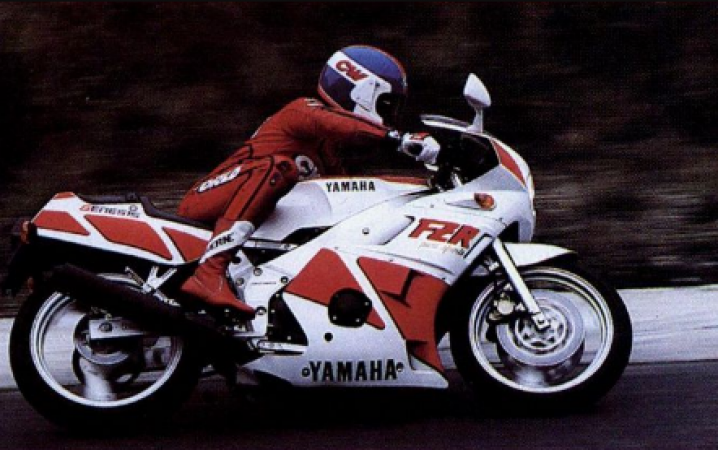
USA: The Yamaha FZR400 is a unicorn, much like the GTS1000 we featured earlier, as its brief existence as an American model lasted just a few years.
When they first came out, they were hard to find because club racers from all over the country were catching them. And with good reason—this thing just destroyed the racetrack. After all, it was originally designed as a racebike and later modified to become a streetbike.
The boom in popularity of production sportbikes that closely resembled their real-racing cousins is largely responsible for the existence of the FZR400 and 400cc replica racers in general.
Also Read: Royal Enfield: Super Meteor 650 is the most expensive motorcycle in its segment
Due to the popularity of the All Japan TT-F3 (Formula 3) racing series, every Japanese manufacturer in Japan was producing a 400cc production model as a TT-F3 racer at the same time.
The issue was that none of these super-hip motorcycles were made for the American markets. Motorcycles such as the Honda CBR400R, Suzuki GSX-R400, and later the Honda VFR400R, Kawasaki ZXR-400R, Honda CBR400RR, and Yamaha FZR400RR SP were available only in Japan.
A small number of these bikes also made their way into the European and Canadian markets. The FZR400 was as close to legal as it could get without turning to the gray market of American customers.
The smallest FZR, like its middle brother the FZR600, was powered by a liquid-cooled inline-four with dual overhead cams and four valves per cylinder; The bore and stroke of the engine was 56.0 x 40.5 mm for 399cc displacement.
The engine is the newest member of the "Genesis" family, with cylinders tilted 45 degrees forward and the most straight intake ports in motorcycles, according to Cycle World, which first tested the FZR400 in its February 1997 issue. At the time, Yamaha made a lot of noise about the FZR1000, FZ750, and FZR750RR OW-01's use of five valves per cylinder.
Riders had to wring the neck of the FZR400 to get all 59 horsepower claimed. The engine was a gem, but it didn't start producing power until the tach needle passed 10,000 rpm on its way to a 14,000-rpm readline; The peak power was at 12,000.
But the performance is also on par with that of a racebike, as we saw. "The engine is lifeless until 7,500 rpm. The FZR successfully reaches 10,000 as soon as the first powerband begins. When the second super-powerband appears, the FZR screeches until it reaches its own redline of 14,000 rpm - and beyond 1,000 rpm.
Therefore, the engine never took center stage. We quoted ourselves as saying, "The chassis is the heart of the FZR; the engine isn't the technology," and we were accurate.
"Yamaha refers to the frame design as a 'Deltabox,' with twin side beams extending down from the steering head to firmly lock the swingarm pivot.
Also Read: 125 mph superbike acceleration electric scooter
The closest thing that production-line motorcycles have to a monocoque chassis are these beams, which are fabricated from stamped and welded aluminum sheets that are approximately 0.060 inches thick. This particular frame would have been a welcome addition to a 500cc GP machine even four years ago.
A wheelbase of only 55.1 inches, a supersteep 24-degree rake (a degree steeper than the FZR600), and trailing only measured 3.5 inches (0.2 inches lower than the 600). 346 pounds was claimed as the dry weight.
We claimed the FZR was as stiff and mechanical on the road as any racebike. "Its clutch pull would be considered harsh at 750, let alone at 400.
Its shifter is short-throw and high-effort. The short-sidewall radial tires work in tandem with the stiffly bouncy suspension to transmit every subtlety of the road surface through the seat. The seat and bar vibrate at a high frequency.
The FZR's handling, however, more closely matched its racing vale, and the bike provided unusual handling at the time. The motorcycle features sharp, positive steering like the FZ600 and the Ducati Paso.
This vehicle has exceptional stability and can change direction at the command of the rider. It can be carried anywhere by the rider and can easily change lanes when leaning into a corner. The performance during braking is also exceptional.
The result of the high-leverage brakes and the sticky, ground-grabbing compound of the front tire is that at 60 mph, a two-finger effort will lift the back wheel off the ground even without a hint of wheel locking.
298mm discs and a pair of twin-piston brake callipers were additional chassis features. In later models, there were two four-piston callipers. Cast aluminium three-spoke wheels measuring 17 inches up front and 18 inches back were covered in tyre sizes of 110/70-17 and 140/60-18, respectively.
The FZR400 was one of the first motorcycles in the world to use low-profile radial tyres, with a sidewall ratio of just 60% of the tire's section width. This fact is perhaps almost forgotten today.
This necessitated rims that were wider than those that a 400cc motorcycle of the time would have typically used, but the combination of a wide rim and low-profile tyre has since become the norm for sportbikes.
Also Read: Indore: 1 dead, 2 injured as speeding Activa rams into divider
We concluded by saying, "Unfortunately, the FZR isn't for everyone, just like a GP racer. It will carry out requests that its rider is unaware he has made, but it won't do anything the rider doesn't ask for.
The FZR will respond to every hiccup you make if you are riding it with a death grip on the bars or without comfort and confidence. It is a machine that is simple to misuse and perhaps needs to be labelled "For Experts Only."